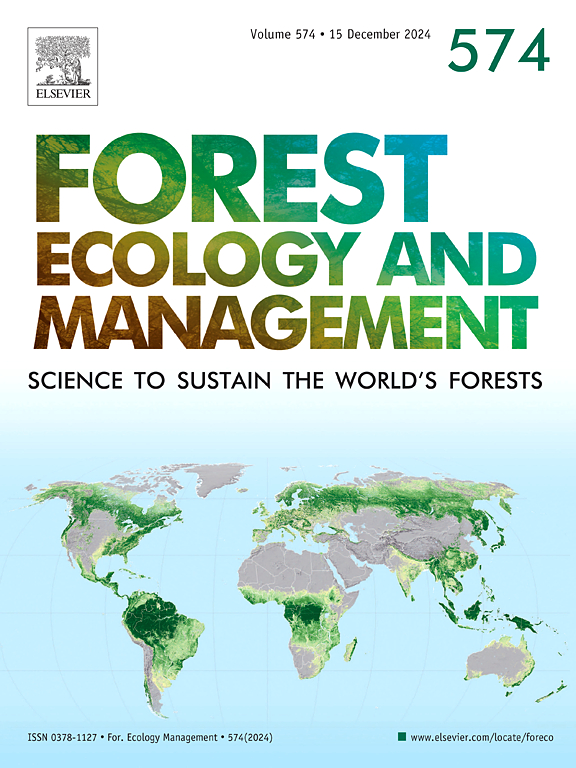树桩处理在防治林业异黑霉根腐病中的作用
IF 3.7
2区 农林科学
Q1 FORESTRY
引用次数: 0
摘要
在温带针叶林和北方针叶林中,异黑霉根腐病是威胁森林健康和造成重大经济损失的主要病原菌。一旦建立,没有完全有效的方法来根除感染。然而,在收获期间进行树桩处理可以防止健康林分的新孢子感染,因为新形成的树桩是原发感染的理想切入点。此外,气候变化正在改变孢子产生的时间,从而影响树桩处理的时间和必要性。目前可用于树桩处理的三种主要物质是尿素,硼酸盐和活腐生真菌Phlebiopsis gigantea (Fr.) j本文章由计算机程序翻译,如有差异,请以英文原文为准。
The role of stump treatment as a preventive control method against Heterobasidion root rot in forestry
Heterobasidion root rot is the primary pathogen threatening forest health and causing significant economic losses in temperate and boreal coniferous forests. Once established, there is no fully effective method to eradicate the infection. However, applying stump treatment during harvesting can prevent new spore infections in healthy stands, as newly created stumps serve as ideal entry points for primary infections. Additionally, climate change is altering the period during which spores are produced, thereby affecting the timing and necessity of stump treatment. Three main substances currently available for stump treatments are urea, borates, and living saprophytic fungi Phlebiopsis gigantea (Fr.) Jülich. Although the use of urea and borates is restricted in many countries, we argue they remain essential piece in the toolkit for enhanced forest health, especially as rising temperatures associated with climate change may reduce the efficacy of living organisms like P. gigantea. This mini-review summarizes and critically evaluates the different stump treatment methods used against Heterobasidion species, with a particular focus on their application in the boreal region.
求助全文
通过发布文献求助,成功后即可免费获取论文全文。
去求助
来源期刊

Forest Ecology and Management
农林科学-林学
CiteScore
7.50
自引率
10.80%
发文量
665
审稿时长
39 days
期刊介绍:
Forest Ecology and Management publishes scientific articles linking forest ecology with forest management, focusing on the application of biological, ecological and social knowledge to the management and conservation of plantations and natural forests. The scope of the journal includes all forest ecosystems of the world.
A peer-review process ensures the quality and international interest of the manuscripts accepted for publication. The journal encourages communication between scientists in disparate fields who share a common interest in ecology and forest management, bridging the gap between research workers and forest managers.
We encourage submission of papers that will have the strongest interest and value to the Journal''s international readership. Some key features of papers with strong interest include:
1. Clear connections between the ecology and management of forests;
2. Novel ideas or approaches to important challenges in forest ecology and management;
3. Studies that address a population of interest beyond the scale of single research sites, Three key points in the design of forest experiments, Forest Ecology and Management 255 (2008) 2022-2023);
4. Review Articles on timely, important topics. Authors are welcome to contact one of the editors to discuss the suitability of a potential review manuscript.
The Journal encourages proposals for special issues examining important areas of forest ecology and management. Potential guest editors should contact any of the Editors to begin discussions about topics, potential papers, and other details.
 求助内容:
求助内容: 应助结果提醒方式:
应助结果提醒方式:


